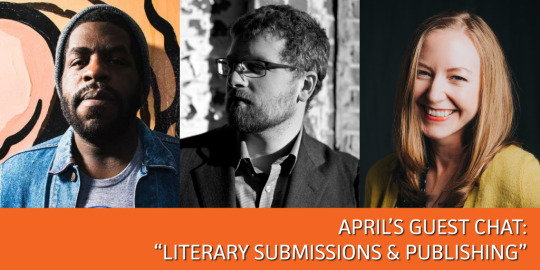Ask #ArtistHotline | Where Should I Submit My Writing?
Get advice from April’s #ArtistHotline guest panel on sending your work out into the world.
On April 19, New York Foundation for the Arts hosted a “Literary Submissions & Publishing” Guest Chat during #ArtistHotline, our monthly Artist Professional Development Day on Twitter. For a two-hour window, we joined with Elisa Gabbert, Lincoln Michel, and Hanif Willis-Abdurraqib to share best practices and resources for writers. These three writers have been published in a variety of journals and anthologies, including Granta, Oxford American, Tin House, The New Yorker, Guernica, The Awl, Catapult, The Rumpus, Powderkeg, the Pushcart Prize anthology, and more.
The three panelists shared a wealth of advice, from self-care tips for writers to etiquette pointers for communicating with editors. You can read the entire Guest Chat conversation in this #ArtistHotline Wakelet recap from April 19.
Finding a Home for Your Writing
The “Literary Submissions & Publishing” Guest Chat covered various parts of the submission process, from creating that first draft to revising, submitting, and resubmitting. When submitting your work, you may have a variety of factors on your mind, such as whether the publication accepts simultaneous submissions—meaning, authors are free to submit pieces they’ve submitted elsewhere around the same time—or whether there’s a submission fee.
In a former NYFA Current article, Everything You Need to Know about Literary Submissions, we suggested that writers also consider the following three questions before submitting:
- Does the magazine’s work appeal to you?
- Is your work a good fit for the publication?
- Will the editors find value in your contribution?
The second question has stumped many writers. How do you decide which publications are the best home for your writing? Here are Gabbert, Michel, and Willis-Abdurraqib’s thoughts on this issue:
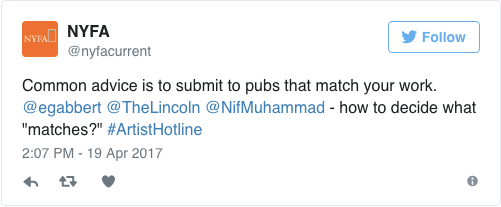
Lincoln Michel replied:

Not only can the editors in a masthead change, but the same editorial board may surprise you and choose a piece that seems to diverge from their usual selections. As Michel tweeted:
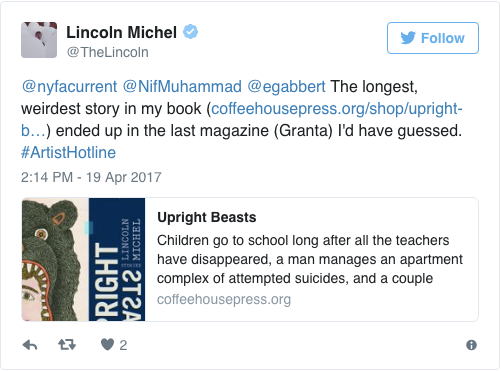
Does this mean that writers should submit to any and all publications, without researching or evaluating the potential fit? Not quite. As Willis-Abdurraqib noted, it’s partly a matter of becoming familiar with various outlets over time, while allowing for a certain amount of fluidity.
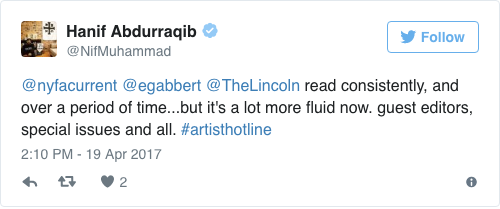
Watch your Pals and Heroes
We also discussed another approach to matchmaking your work with the wide variety of literary journals: look at the publication histories of the writers you admire.
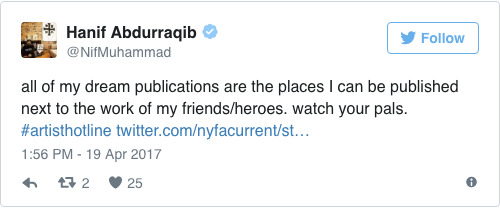
Make a list of your favorite writers, and the writers who grapple with similar themes, or who have certain stylistic similarities. Where have they been published? Are these places where you’d like to see your work? As you start to assemble your list of dream publications, we recommend that you create a system to keep yourself organized, and become “one with the spreadsheet,” in the words of writer Glendaliz Camacho, as you navigate various submission guidelines and deadlines.
And, as you begin building your publication history, it can be wise to acknowledge that your first publication credit may not be The New Yorker.
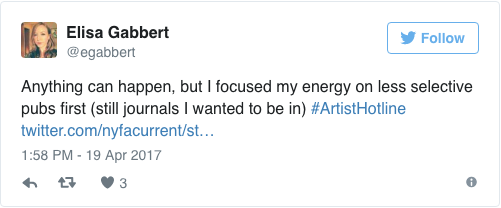
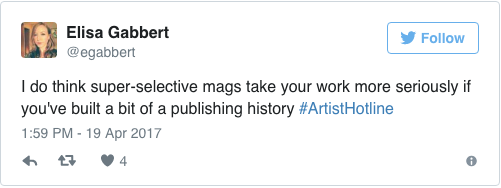
Research, Submit, Repeat
Any writer who works toward publishing their work will face rejection. How you deal with that rejection helps to determine whether and how often your work makes it out into the world. As Willis-Abdurraqib shared, I learned to submit to places I loved more than one single time. Which still serves me well today.
When asked whether they edited their work based on whether it was rejected, the answers of the three guest tweeters proved there isn’t a simple “yes” or “no” answer to that question. Gabbert also pointed out that if a piece is rejected, that doesn’t mean it’s not good.
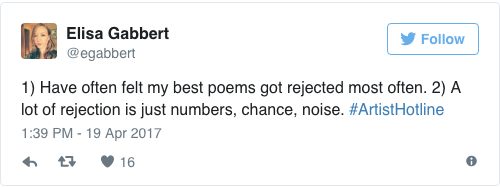
So when it comes to submitting, a writer can try to beat the odds, and increase their chances of being published by submitting, submitting, and then submitting again. Use NYFA Source, a nationwide database of artist awards and services, and submission roundups from websites like Entropy to find journals that are accepting submissions.
Want More Literary Advice?
If you’re seeking further guidance on maneuvering through the literary world, check out Elisa Gabbert’s monthly literary advice column, The Blunt Instrument. Do you have submission tips of your own, or do you want to bounce your publishing questions off of other writers? Use the hashtag #ArtistHotline on Twitter to share and ask questions.
Inspired by the NYFA Source Hotline, #ArtistHotline is dedicated to creating an ongoing online conversation around the professional side of artistic practice. #ArtistHotline occurs on the third Wednesday of each month on Twitter. Our goal is to help artists discover the resources needed, online and off, to develop sustainable careers. This initiative is supported by the Emily Hall Tremaine Foundation.
– Mirielle Clifford, Program Officer, Online Resources
Images, from left to right: courtesy of Hanif Willis-Abdurraqib, Lincoln Michel, and Elisa Gabbert

